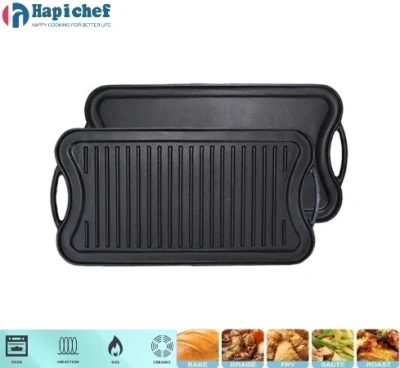Techniques for Frying in a Cast Iron Skillet for Perfectly Cooked Meals
The Art of Frying in a Cast Iron Skillet
Frying is not just a cooking method; it’s an art form that has been practiced for centuries. Among the various tools available to chefs and home cooks alike, the cast iron skillet stands out as a beloved kitchen staple. The durability and versatility of cast iron make it an ideal choice for frying, whether you are cooking up a simple breakfast of eggs and bacon or creating a gourmet dinner.
The Benefits of Cast Iron Skillets
One of the primary reasons chefs recommend using cast iron skillets for frying is their ability to retain heat. Unlike other materials such as stainless steel or non-stick, cast iron distributes heat evenly, ensuring that your food cooks thoroughly without hotspots. This characteristic is particularly valuable when frying, as it helps create a perfectly crisp exterior while keeping the interior juicy.
Additionally, cast iron skillets can withstand high temperatures, making them perfect for searing meats and achieving that desirable crust. With a well-seasoned cast iron skillet, you can reach temperatures that may damage other cookware, allowing for a variety of frying techniques—from shallow frying to deep frying.
A significant advantage of using cast iron is its versatility. You can use it on the stovetop, in the oven, or even over an open flame. This multifunctionality allows you to start a dish on the stove and finish it in the oven without needing to transfer it to another pan.
Preparing Your Cast Iron Skillet
Before you embark on your frying journey, it’s important to prepare and maintain your cast iron skillet. Proper seasoning is crucial as it creates a non-stick surface and prevents rust. To season your skillet, simply wash it with hot water, dry it thoroughly, and apply a thin layer of vegetable oil. Bake it upside down in the oven at a high temperature for an hour. This process creates a natural non-stick coating that enhances with each use.
frying in cast iron skillet

Keep in mind that using soap can strip away the seasoning, so a gentle scrub with a brush or sponge and hot water is usually sufficient for cleaning after frying. After cleaning, reapply a small amount of oil to maintain the seasoning.
Techniques for Frying
When frying in a cast iron skillet, temperature control is key. Preheat your skillet thoroughly before adding oil. The right oil for frying is just as important as the skillet itself; options like vegetable oil, canola oil, or peanut oil have high smoke points, making them ideal for frying.
Once the oil is heated (you can test this by dropping a small piece of food in—if it sizzles, you’re ready), carefully add your ingredients. Avoid crowding the pan; this will lower the oil temperature and lead to soggy food. Fry in batches if necessary.
For crispy results, consider using a two-step frying method. Start by frying at a lower temperature to cook the inside thoroughly, then increase the heat to finish with a crispy golden exterior.
Lastly, when frying meats or vegetables, don’t forget to monitor the cooking time closely. A well-timed flip and a watchful eye will ensure that your dishes turn out perfect every time.
Conclusion
Frying in a cast iron skillet is a rewarding experience that elevates everyday meals. With proper maintenance and technique, your skillet can provide years of delicious, perfectly cooked food. Embrace the art of frying and explore the culinary possibilities that this incredible tool offers. From classic fried chicken to delectable vegetable fritters, the cast iron skillet is your ally in the kitchen, ensuring that every frying endeavor is both enjoyable and successful. So go ahead, heat that skillet, and let the frying begin!
-
Why Every Home Cook Needs a Cast Iron Meat PressNewsNov.12,2024
-
Unlock Perfectly Seared Steaks with the Cast Iron Meat PressNewsNov.12,2024
-
Master the Art of Cooking Thick Cuts of Meat with a Cast Iron Meat PressNewsNov.12,2024
-
How to Care for Your Cast Iron Meat Press: Tips for Longevity and PerformanceNewsNov.12,2024
-
How a Cast Iron Meat Press Enhances the Flavor and Texture of Your BurgersNewsNov.12,2024
-
Roasting Pan for Perfect MealsNewsNov.04,2024
-
Perfect Skillet for SaleNewsNov.04,2024
